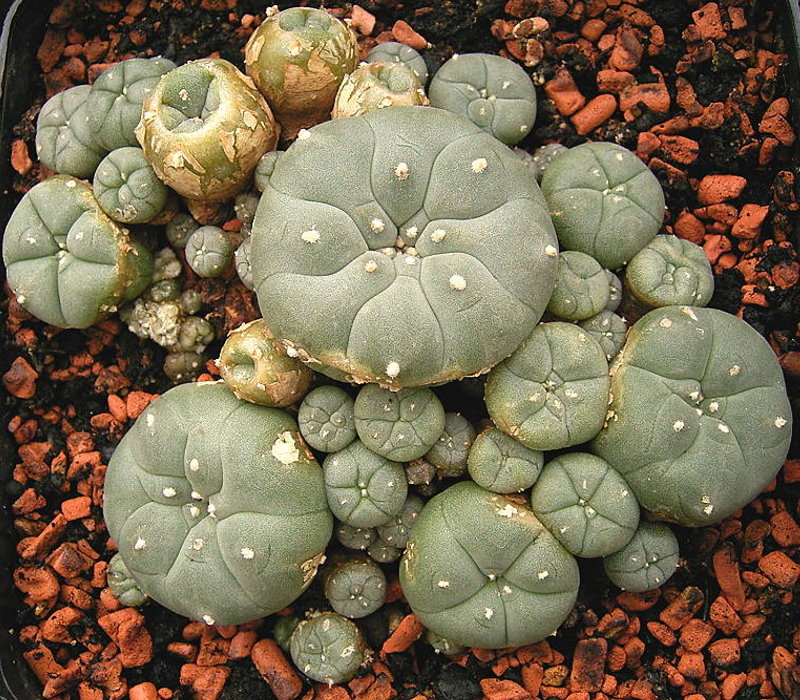|
Harvard Psilocybin Project
The Harvard Psilocybin Project was a series of experiments in psychology conducted by Timothy Leary and Richard Alpert. The founding board of the project consisted of Leary, Aldous Huxley, David McClelland (Leary's and Alpert's superior at Harvard University), Frank Barron, Ralph Metzner, and two graduate students who were working on a project with mescaline. Description The experiments began some time in 1960 and lasted until March 1962, when other professors in the Harvard Center for Research in Personality raised concerns about the legitimacy and safety of the experiments in an internal meeting. Leary and Alpert's experiments were part of their personal discovery and advocacy of psychedelics. As such, their use of psilocybin and other psychedelics ranged from the academically sound and open Concord Prison Experiment, in which inmates were given psilocybin in an effort to reduce recidivism, to frequent personal use. The Marsh Chapel Experiment, an example of the Project's ac ... [...More Info...] [...Related Items...] OR: [Wikipedia] [Google] [Baidu] |
Recidivism
Recidivism (; from ''recidive'' and ''ism'', from Latin ''recidīvus'' "recurring", from ''re-'' "back" and ''cadō'' "I fall") is the act of a person repeating an undesirable behavior after they have experienced negative consequences of that behavior. It is also used to refer to the percentage of former prisoners who are rearrested for a similar offense.Henslin, James. ''Social Problems: A Down-To-Earth Approach'', 2008. The term is frequently used in conjunction with criminal behavior and substance abuse. Recidivism is a synonym for "relapse", which is more commonly used in medicine and in the disease model of addiction. Norway has one of the lowest recidivism rates in the world at 20%. Prisons in Norway and the Norwegian criminal justice system focus on restorative justice and rehabilitating prisoners rather than punishment. United States According to an April 2011 report by the Pew Center on the States, the average national recidivism rate for released prisoners ... [...More Info...] [...Related Items...] OR: [Wikipedia] [Google] [Baidu] |
Psychedelic Drug Research
Psychedelics are a subclass of hallucinogenic drugs whose primary effect is to trigger non-ordinary states of consciousness (known as psychedelic experiences or "trips").Pollan, Michael (2018). ''How to Change Your Mind: What the New Science of Psychedelics Teaches Us About Consciousness, Dying, Addiction, Depression, and Transcendence'' Sometimes, they are called classic hallucinogens, serotonergic hallucinogens, or serotonergic psychedelics, and the term ''psychedelics'' is used more broadly to include all hallucinogens; this article uses the narrower definition of ''psychedelics''. Psychedelics cause specific psychological, visual, and auditory changes, and often a substantially altered state of consciousness.Leary, Timothy; Metzner, Ralph (1964). ''The Psychedelic Experience: A Manual Based on The Tibetan Book of the Dead'' Psychedelic states are often compared to meditative, psychodynamic or transcendental types of alterations of mind. The "classical" psychedelics, the psy ... [...More Info...] [...Related Items...] OR: [Wikipedia] [Google] [Baidu] |
Psilocybin Therapy
Psilocybin therapy is the use of psilocybin (the psychoactive ingredient in psilocybin mushrooms) in treating a range of mental health conditions, such as depression, anxiety, addictions, obsessive compulsive disorder, and psychosis. It is one of several forms of psychedelic therapy under study. Psilocybin was popularized as a psychedelic recreational drug in the 1970s and was classified as a Schedule I drug by the DEA. Research on psilocybin as a medical treatment was restricted until the 1990s because of the sociocultural fear of dependence on this drug. As of 2022, psilocybin is the most commonly researched psychedelic due to its safety and low potential for abuse and dependence. Clinical trials are being conducted at universities and there is evidence confirming the use of psilocybin in the treatment of depression, PTSD and end of life anxiety. History The first historical record of psilocybin use dates back to Mesoamerica. A Codex known as the "Yuta Tnoho" that belonged to t ... [...More Info...] [...Related Items...] OR: [Wikipedia] [Google] [Baidu] |
Counterculture Of The 1960s
The counterculture of the 1960s was an anti-establishment cultural phenomenon that developed throughout much of the Western world in the 1960s and has been ongoing to the present day. The aggregate movement gained momentum as the civil rights movement in the United States continued to grow, and with the intensification of the Vietnam War, it would later become revolutionary to some. As the 1960s progressed, widespread social tensions also developed concerning other issues, and tended to flow along generational lines regarding human sexuality, women's rights, traditional modes of authority, rights of non-white people, end of racial segregation, experimentation with psychoactive drugs, and differing interpretations of the American Dream. Many key movements related to these issues were born or advanced within the counterculture of the 1960s. As the era unfolded, what emerged were new cultural forms and a dynamic subculture that celebrated experimentation, modern incarnations of ... [...More Info...] [...Related Items...] OR: [Wikipedia] [Google] [Baidu] |
Peyote
The peyote (; ''Lophophora williamsii'' ) is a small, spineless cactus which contains psychoactive alkaloids, particularly mescaline. ''Peyote'' is a Spanish word derived from the Nahuatl (), meaning "caterpillar cocoon", from a root , "to glisten". p. 246. See peyotl in Wiktionary. Peyote is native to Mexico and southwestern Texas. It is found primarily in the Sierra Madre Occidental, the Chihuahuan Desert and in the states of Nayarit, Coahuila, Nuevo León, Tamaulipas, and San Luis Potosí among scrub. It flowers from March to May, and sometimes as late as September. The flowers are pink, with thigmotactic anthers (like '' Opuntia''). Known for its psychoactive properties when ingested, peyote has at least 5,500 years of entheogenic and medicinal use by indigenous North Americans. Description The various species of the genus '' Lophophora'' grow low to the ground and they often form groups with numerous, crowded shoots. The blue-green, yellow-green or sometimes ... [...More Info...] [...Related Items...] OR: [Wikipedia] [Google] [Baidu] |
Mescaline
Mescaline or mescalin (3,4,5-trimethoxyphenethylamine) is a naturally occurring psychedelic protoalkaloid of the substituted phenethylamine class, known for its hallucinogenic effects comparable to those of LSD and psilocybin. Biological sources It occurs naturally in several species of cacti. It is also found in small amounts in certain members of the bean family, Fabaceae, including '' Acacia berlandieri''. However those claims concerning ''Acacia'' species have been challenged and have been unsupported in any additional analysis. History and use Peyote has been used for at least 5,700 years by Indigenous peoples of the Americas in Mexico. Europeans noted use of peyote in Native American religious ceremonies upon early contact, notably by the Huichols in Mexico. Other mescaline-containing cacti such as the San Pedro have a long history of use in South America, from Peru to Ecuador. While religious and ceremonial peyote use was widespread in the Aztec empire and nor ... [...More Info...] [...Related Items...] OR: [Wikipedia] [Google] [Baidu] |
Zihuatanejo Project
The Zihuatanejo Project was a psychedelic training center and intentional community created during the beginning of the counterculture of the 1960s by Timothy Leary and Richard Alpert under the umbrella of their nonprofit group, the International Federation for Internal Freedom (IFIF). The community was located in Zihuatanejo, Guerrero, Mexico, and took up residence at the Hotel Catalina in the summers of 1962 and 1963.Leary, Timothy; Richard Alpert; Ralph Metzner. 1964. "Rationale of the Mexican Psychedelic Training Center". In Richard Blum: ''Utopiates: The Use and Users of LSD-25'', 178-186. New York: Atherton Press. . Background Leary and Alpert first discovered the town of Zihuatanejo in 1960. After the Marsh Chapel Experiment in 1962 they decided the area would make a good location for a training center. The idea for the community was influenced by Aldous Huxley's fictional novel, ''Island'' (1962).Lattin, Don. 2011. ''The Harvard Psychedelic Club: How Timothy Leary, Ra ... [...More Info...] [...Related Items...] OR: [Wikipedia] [Google] [Baidu] |
Massachusetts Department Of Public Health
The Massachusetts Department of Public Health is a governmental agency of the Commonwealth of Massachusetts with various responsibilities related to public health within that state. It is headquartered in Boston and headed by Commissioner Monica Bharel. Goal Broadly stated, the goal of the Massachusetts Department of Public Health is to: serve all the people in the Commonwealth, particularly the under served, and to promote healthy people, healthy families, healthy communities and healthy environments through compassionate care, education and prevention. Bureaus and programs Among the bureaus and programs of the Massachusetts Department of Public Health are the following: *Bureau of Communicable Disease Control is concerned with areas including tuberculosis prevention and control, sexually transmitted disease prevention, epidemiology, immunization, influenza and West Nile virus monitoring and control, disease quarantine requirements, HIV/ AIDS surveillance and health programs ... [...More Info...] [...Related Items...] OR: [Wikipedia] [Google] [Baidu] |
Random Sampling
In statistics, quality assurance, and survey methodology, sampling is the selection of a subset (a statistical sample) of individuals from within a statistical population to estimate characteristics of the whole population. Statisticians attempt to collect samples that are representative of the population in question. Sampling has lower costs and faster data collection than measuring the entire population and can provide insights in cases where it is infeasible to measure an entire population. Each observation measures one or more properties (such as weight, location, colour or mass) of independent objects or individuals. In survey sampling, weights can be applied to the data to adjust for the sample design, particularly in stratified sampling. Results from probability theory and statistical theory are employed to guide the practice. In business and medical research, sampling is widely used for gathering information about a population. Acceptance sampling is used to determ ... [...More Info...] [...Related Items...] OR: [Wikipedia] [Google] [Baidu] |
Sandoz
Novartis AG is a Swiss-American multinational pharmaceutical corporation based in Basel, Switzerland and Cambridge, Massachusetts, United States (global research).name="novartis.com">https://www.novartis.com/research-development/research-locations It is one of the largest pharmaceutical companies in the world. Novartis manufactures the drugs clozapine (Clozaril), diclofenac (Voltaren; sold to GlaxoSmithKline in 2015 deal), carbamazepine (Tegretol), valsartan (Diovan), imatinib mesylate (Gleevec/Glivec), cyclosporine (Neoral/Sandimmune), letrozole (Femara), methylphenidate (Ritalin; production ceased 2020), terbinafine (Lamisil), deferasirox (Exjade), and others. In March 1996, the companies Ciba-Geigy and Sandoz merged to form Novartis; the pharmaceutical and agrochemical divisions of both companies formed Novartis as an independent entity. Other Ciba-Geigy and Sandoz businesses were sold, or, like Ciba Specialty Chemicals, spun off as independent companies. The S ... [...More Info...] [...Related Items...] OR: [Wikipedia] [Google] [Baidu] |
Entheogen
Entheogens are psychoactive substances that induce alterations in perception, mood, consciousness, cognition, or behavior for the purposes of engendering spiritual development or otherwiseRätsch, Christian, ''The Encyclopedia of Psychoactive Plants: Ethnopharmacology and Its Applications'' pub. Park Street Press 2005 in sacred contexts. Anthropological study has established that entheogens are used for religious, magical, shamanic, or spiritual purposes in many parts of the world. Entheogens have traditionally been used to supplement many diverse practices geared towards achieving transcendence, including divination, meditation, yoga, sensory deprivation, healings, asceticism, prayer, trance, rituals, chanting, imitation of sounds, hymns like peyote songs, drumming, and ecstatic dance. The psychedelic experience is often compared to non-ordinary forms of consciousness such as those experienced in meditation, near-death experiences, and mystical experiences. Ego d ... [...More Info...] [...Related Items...] OR: [Wikipedia] [Google] [Baidu] |






